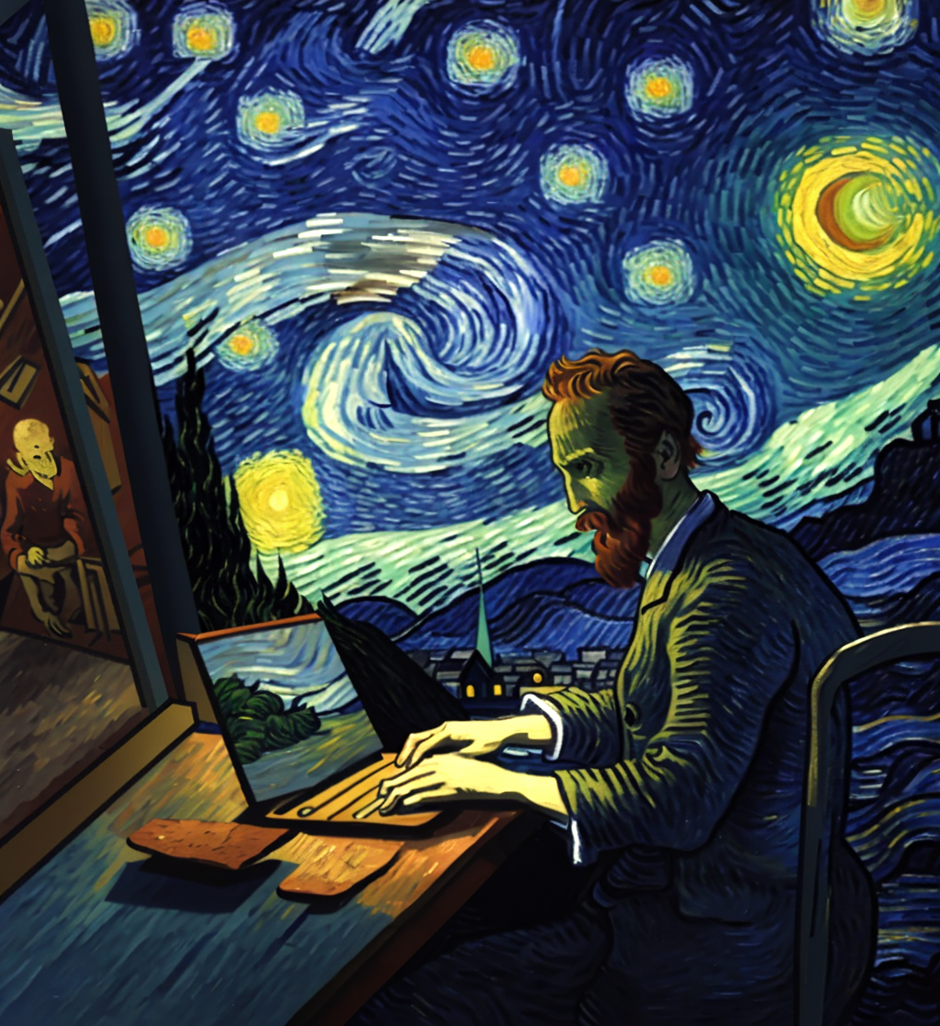Immersive Van Gogh SUCKS!!!

As an art enthusiast & Van Gogh fanboy (more like a bandwagon), I recently had the opportunity to visit an immersive Van Gogh event, and it was undeniably captivating. The mesmerizing blend of technology and Van Gogh's masterpieces created a visually stunning experience. However, upon reflection, I cannot help but feel conflicted about the true essence of art in such immersive exhibitions. While the event was undoubtedly a spectacle to behold, I couldn't shake the nagging thought that it might be driven more by greed and profit than a genuine appreciation for art. This experience removed the artist from the art and frankly, I don't think you can sep
Stepping into the immersive Van Gogh event was like entering a dream world. The walls and ceilings came alive with moving renderings of Van Gogh's art, enveloping me in his genius. The use of advanced technology allowed me to feel a connection with the artwork like never before, and the interactive elements made the experience truly engaging. I found myself in awe of the sheer visual beauty surrounding me.
The Commercialization of Art:
Despite the captivating allure of the immersive experience, I couldn't help but wonder if it had become more of a commercial venture than a celebration of art. The event's heavy promotion, endless advertisements, and high-ticket prices raised concerns about whether profit was the primary motive. It felt as though the organizers were more interested in attracting massive crowds and generating revenue than preserving the integrity and artistic value of Van Gogh's original works.
The Impact of Technology:
The use of technology in art is undoubtedly exciting and can offer new perspectives on timeless masterpieces. However, I questioned whether technology's integration in immersive art experiences might dilute the authenticity and aura of the original artworks. As Walter Benjamin's ideas on the "Aura of Art" suggest, reproductions and mass-produced art lack the unique essence present in the original works. The immersive approach seemed to risk diminishing the emotional and intellectual engagement that traditional art museums provide.
A Loss of Artistic Ingenuity:
While the event was visually stunning, I couldn't help but feel that it prioritized spectacle over artistic ingenuity. The emphasis on eye-catching visuals and interactivity seemed designed to cater to a broader audience and appeal to the masses, rather than encouraging genuine artistic exploration. I found myself yearning for a more profound connection with the art, one that would challenge my perceptions and provoke thought, rather than merely indulging my senses.
Preserving Artistic Integrity:
As an art lover, I believe in the importance of preserving artistic integrity. The immersive Van Gogh experience left me concerned about its impact on artists and their creative visions. Could the allure of such profitable ventures lead artists to create work that panders to mass audiences, rather than pursuing their authentic creative expressions? I worried that the pressure to conform to market trends might stifle true artistic innovation and lead to a homogenization of artistic expression.
My visit to the immersive Van Gogh event was undoubtedly awe-inspiring, but it also left me with conflicting emotions. While I marveled at the technological prowess and visual spectacle, I couldn't shake the nagging feeling that the event might be driven by greed and profit, rather than a genuine appreciation for art. As technology continues to shape the art world, I believe it is crucial to safeguard the integrity of artistic creativity and resist the allure of profit-driven approaches that might undermine the essence of true artistic expression.
Comments ()